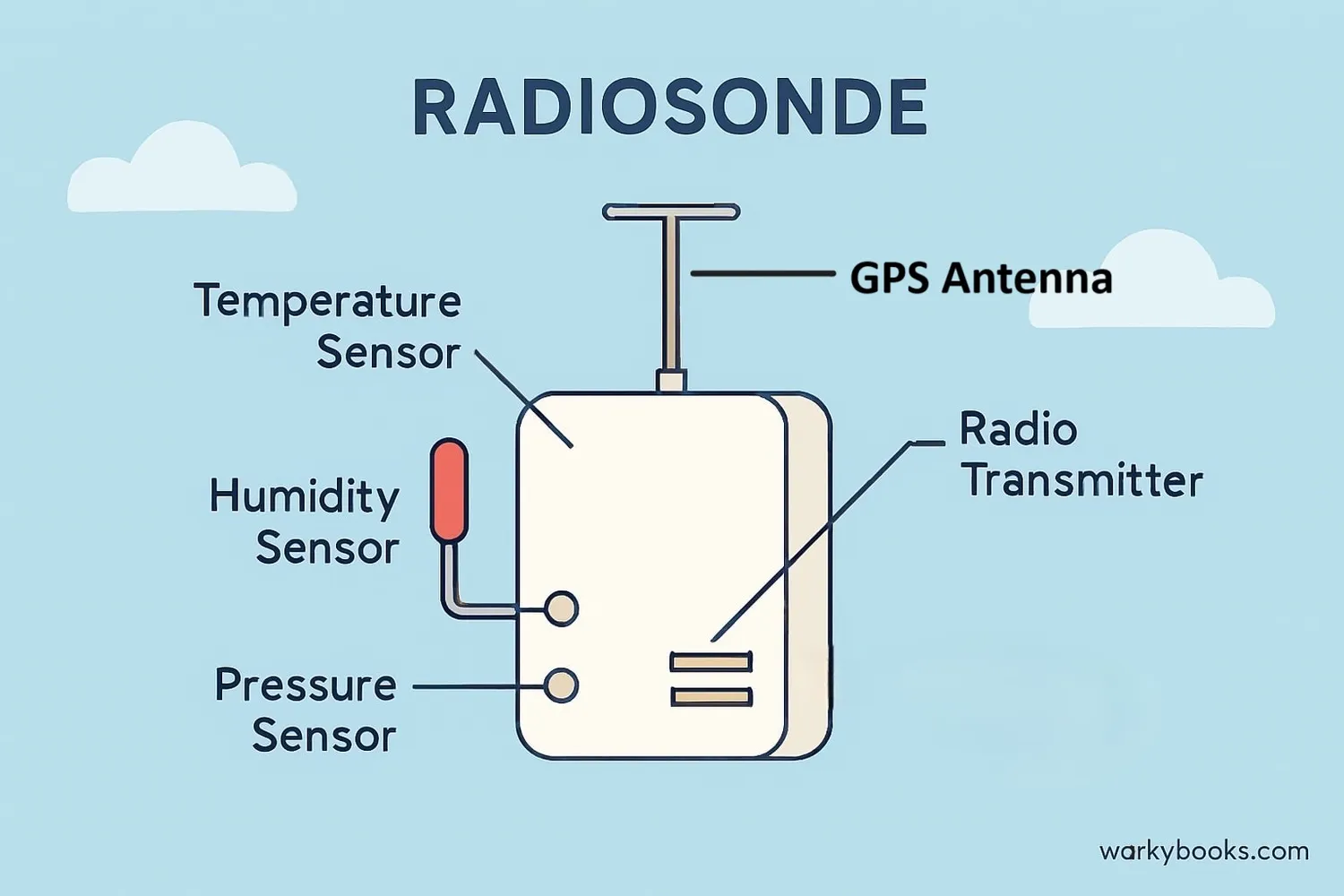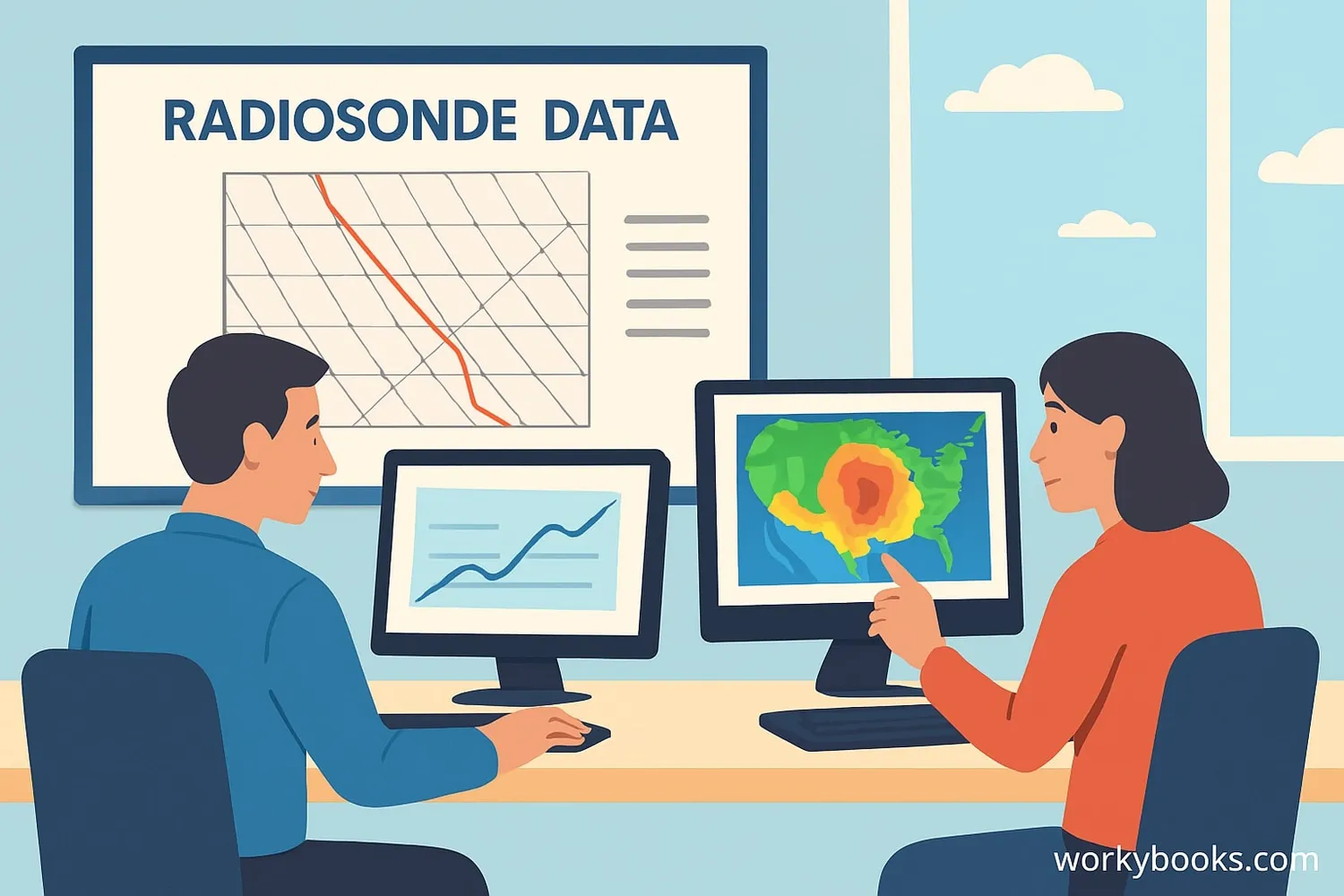Radiosonde - Definition, Examples, Quiz, FAQ, Trivia
Discover how scientists explore the upper atmosphere to predict weather
What is a Radiosonde?

A radiosonde is a special weather instrument that travels high into the sky attached to a weather balloon! It's like a tiny weather station that measures temperature, humidity, air pressure, and wind as it rises through the atmosphere.
The name "radiosonde" comes from two words: "radio" because it sends information by radio signals, and "sonde" which is French for "probe." So it's literally a "radio probe" that explores the upper atmosphere!
Did You Know?
Radiosondes can fly up to 115,000 feet high - that's higher than most airplanes fly! At that height, the balloon expands to the size of a school bus before bursting.
How Radiosondes Work

Radiosondes are amazing scientific tools that help meteorologists understand our atmosphere. Here's how they collect weather data:
Launch
Meteorologists fill a balloon with helium and attach the radiosonde
Ascent
The balloon rises at about 1,000 feet per minute
Measurement
Sensors collect temperature, humidity, and pressure data
Transmission
Data is sent by radio signal to a ground station
Recovery
After balloon bursts, a parachute brings radiosonde back to Earth
As the radiosonde rises, it continuously measures:
• Temperature: How hot or cold the air is
• Humidity: How much water vapor is in the air
• Pressure: The weight of the air above
• Wind: Speed and direction using GPS tracking
This information creates a vertical profile of the atmosphere called an "atmospheric sounding."
Global Network
About 900 locations worldwide launch radiosondes twice every day at exactly the same time (midnight and noon GMT). This creates a global picture of our atmosphere!
Why Radiosondes Are Important

Radiosondes provide crucial information that helps us understand and predict the weather. Here's why they're so valuable to scientists:
Weather Forecasting
Provides data for computer models that predict storms, temperature changes, and precipitation
Aviation Safety
Helps pilots understand wind patterns and turbulence at different altitudes
Climate Research
Provides long-term records of how our atmosphere is changing over time
Without radiosondes, weather forecasts would be much less accurate! They help meteorologists:
• Predict severe weather like hurricanes and tornadoes
• Understand how pollution moves through the atmosphere
• Monitor climate change by tracking temperature trends
• Study the ozone layer that protects us from harmful sun rays
Next time you see a weather forecast, remember that a radiosonde probably helped create it!
Radiosonde Quiz
Test your knowledge about radiosondes and weather balloons with this quiz! Answer all 5 questions to see how much you've learned.
Frequently Asked Questions
Here are answers to common questions about radiosondes:
Radiosonde Trivia
Discover some fascinating facts about radiosondes and weather balloons:
Historical First
The first radiosonde was launched in 1929 by Robert Bureau in France. Early models used a clockwork mechanism to switch between sensors and transmit Morse code signals!
Altitude Record
The highest-flying weather balloon reached 173,900 feet (53 km) in 2002! That's about one-third of the way to space, where the sky appears black even during daytime.
Global Network
About 1,300 radiosondes are launched every day from locations around the world. The United States launches about 75,000 radiosondes each year from 92 stations.
Scientific Impact
Radiosonde data helped discover the jet stream in the 1940s. This high-altitude wind current is crucial for weather forecasting and aviation routes today.





